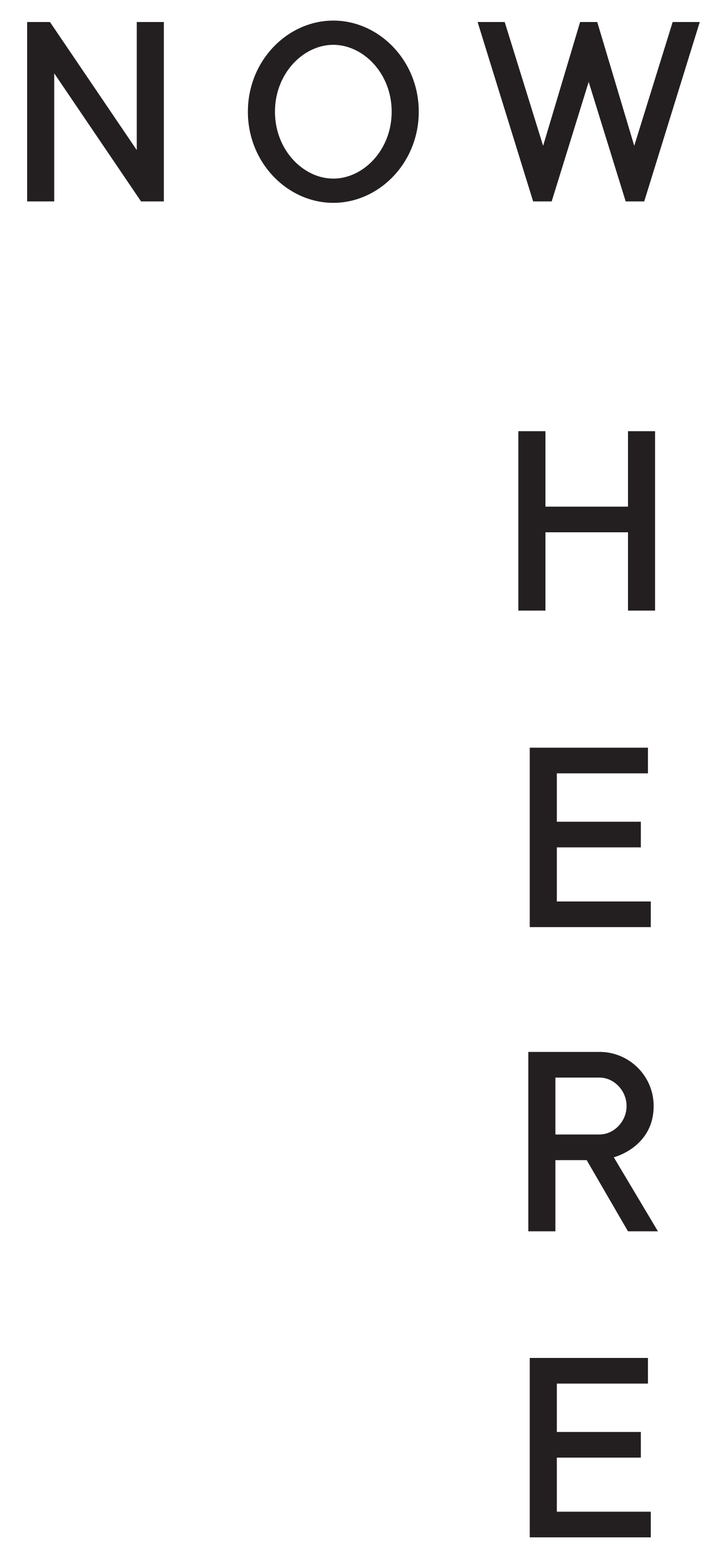TOP | EXHIBITION VIEW | INTERVIEW | ABOUT
HOME > EXHIBITIONS > MOTOMICHI NAKAMURA
Motomichi Nakamura
Shadows and Light
January 19th – February 12th, 2023
Opening Reception:
Thursday, January 19th, 6–8pm
Red, white, and black
Motomichi Nakamura is an artist who deals in extremes of light and dark. His practice includes projection, which relies on and thrives via light, but his paintings utilize the blackest blacks possible.
Nakamura, in his work, creates a universe using just three shades. The menagerie of his beings exists in a world of polarized color. There’s a pantheon of artists who have dealt with black, and Nakamura reaches for their ranks with his paintings, which use a groundbreaking new tone that completely obliterates any sign of light. Gazing into these works, Nietzsche’s abyss comes to mind. We see it and it also sees us. It darkly looks back at us, like a reflecting pool filled with motor oil.
Both white and black have dual natures. The incalculable depth of darkness can evoke fear, as of the unknown and what lurks inside it, but also peace, as in eternal rest. The nakedness of light links to purity, as of the driven snow and all that, but also to an inescapable, eye-searing sense of scrutiny, as in an interrogation room. Light, in this way, can be just as scary as dark.
But perhaps more pressing are the monsters we encounter here. The beasts that populate Nakamura’s paintings and drawings are actually complicated characters. They also look at us, and we can sense an energy coming from them. But what is it? Are they hungry and menacing? Or are they curious and gentle? There’s something about them that makes both readings possible. These are monsters, yes—even Nakamura says so—but they are conflicted monsters who don’t know whether to scare or soothe.
There is pure playfulness here too, as when Nakamura anthropomorphizes a simple desk lamp through the addition of eyes—one quick gesture that makes the inanimate come alive. Here he uses light as a toy, with a child’s sense of discovery.
And then there’s Nakamura’s red, which pops up like a flashing beacon. When red appears in his work it’s a welcome surprise that serves to lend more depth to the blackness. It is the sign of a fire inside his monsters, an animating force that brings energy to these creatures the way lightning sparked Frankenstein’s monster to live again. Will Nakamura’s monsters one day find a life of their own and march off the walls and into our world? Looking at them, anything seems possible.
EXHIBITION VIEW
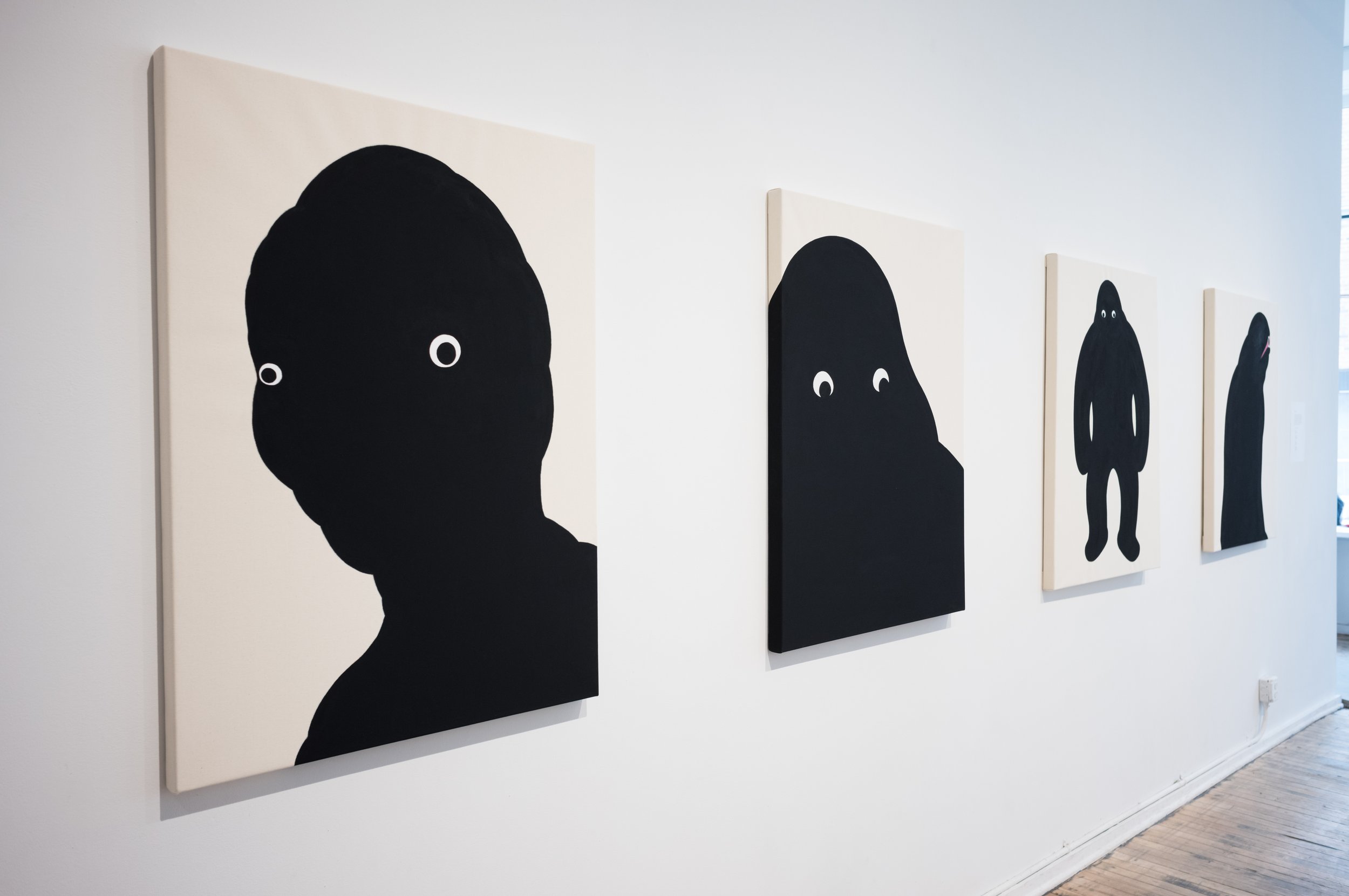
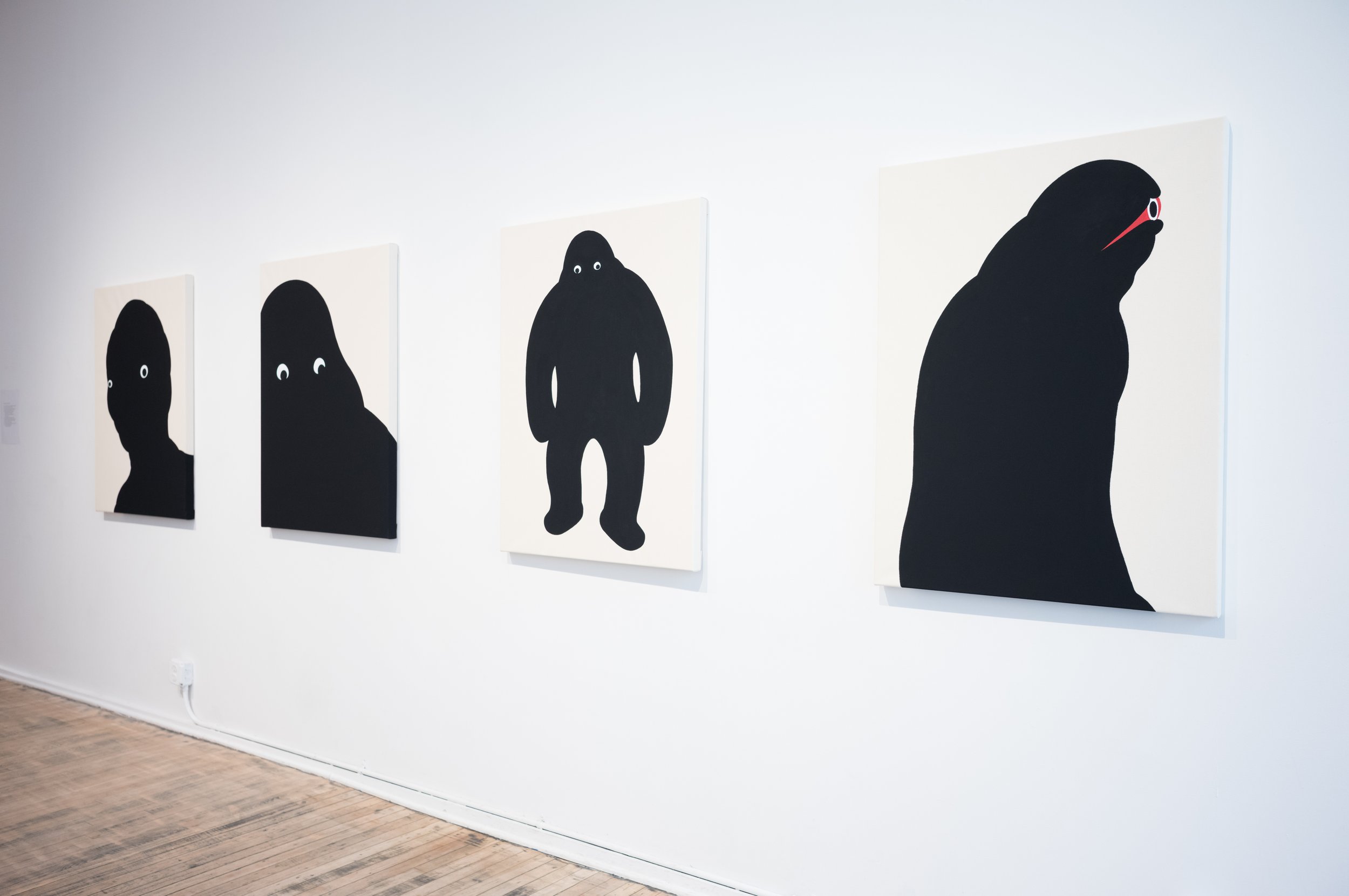


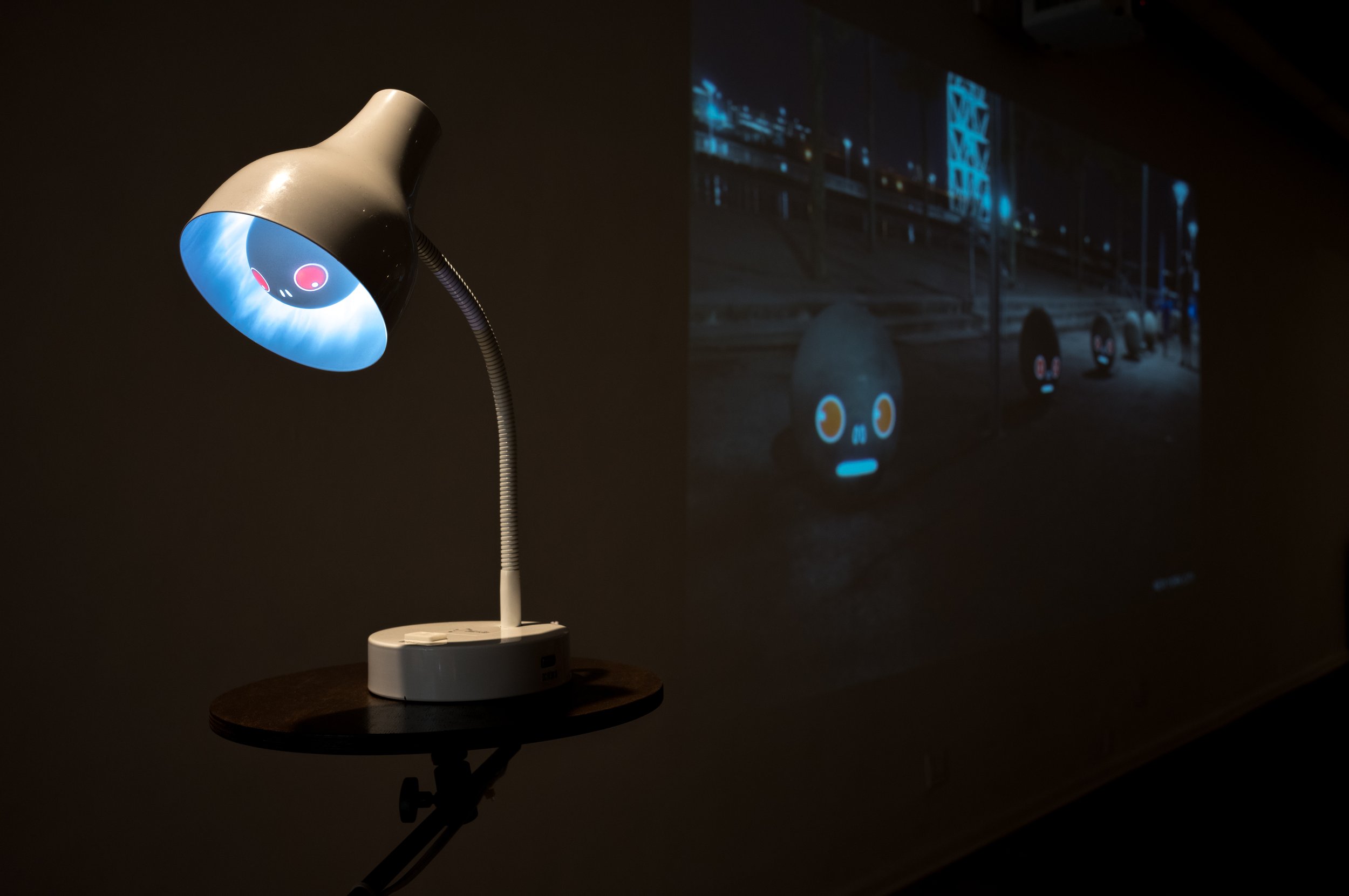

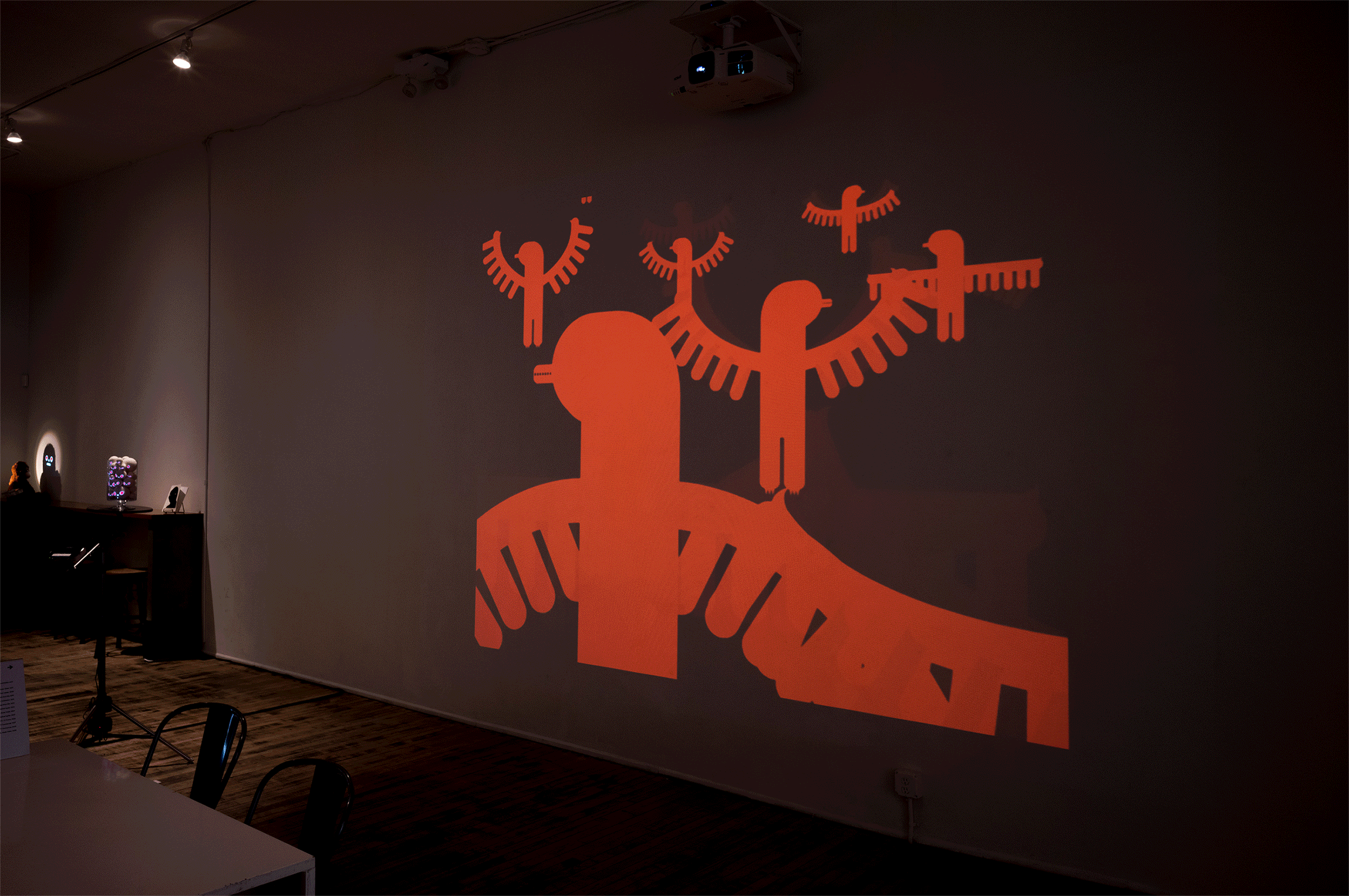


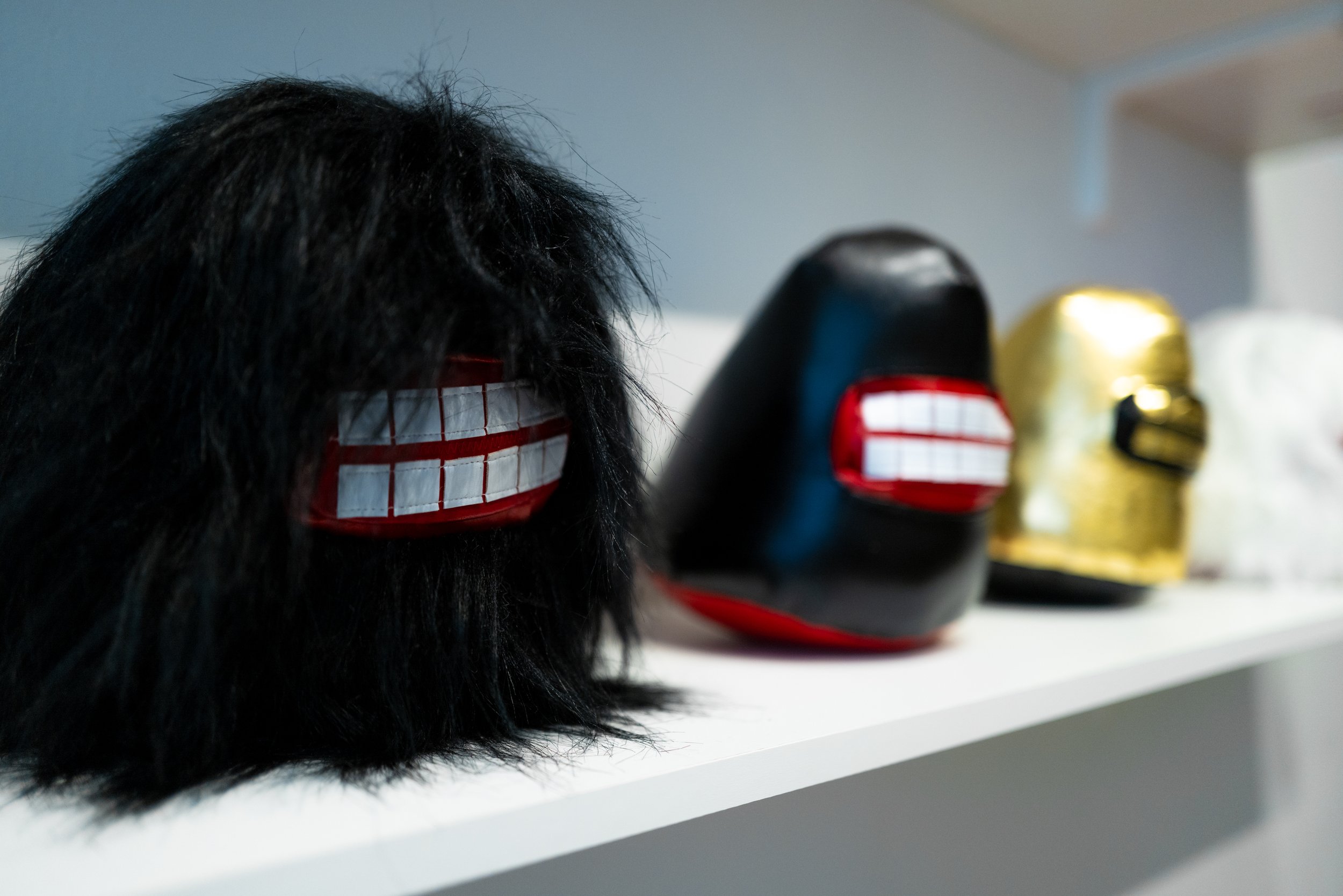



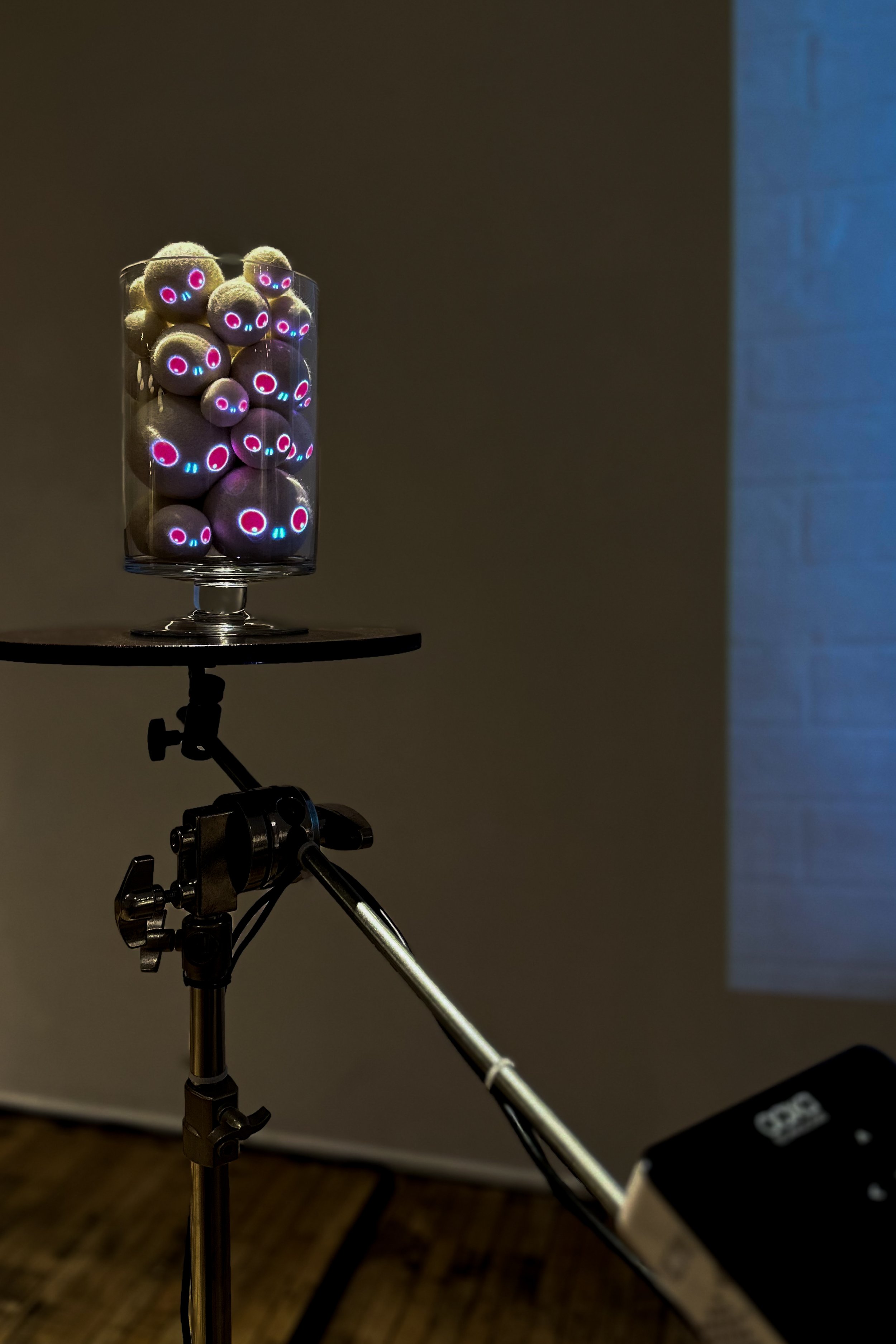
INTERVIEW
LOOK INTO THE LIGHT
– An interview with Motomichi Nakamura
Were you afraid of the dark as a child?
I think I was afraid of the dark as much as others but I was more curious than anything else. I'd rather be out at night with a flashlight. I always enjoyed that thrilling feeling.
Why do you think people are afraid of the dark? Not even just children, but some adults too.
I think it's the fear of not knowing what’s there. Looking into complete darkness gives you an uneasy feeling physically because your eyes can't really focus on anything. I feel like you lose your sense of location or gravity a little bit.
You work with black a lot. What does that color represent in your work?
It means many different things to me. It’s spiritual, it’s about the beginning or the origin, and it’s also about anger, fear, lifelessness, heaviness, mystery, regret…
It’s very rich. So you’re using a new shade called Black 3.0 in your paintings now. When did you discover it, and what exactly is it? Why are you drawn to it?
I started painting in black, white, and red in 2001. I was just using regular black, such as Mars black, at first. Years passed and I started getting into projection mapping in 2012. My painting work and projection had been separate practices and I didn't see connections between the two until recently when I started paying more attention to shadows in the projection work. Shadows are created by light, and you can also artificially create shadows by painting black. The darker the black is, the more light it absorbs. So I started looking into the darkest black paint possible and I came across Vantablack, which is copyrighted by the artist Anish Kapoor.
I didn’t know one could copyright a color.
At first I thought that was ridiculous! And since I couldn't get the Vantablack I found out about Black 2.0 from Culture Hussle. The original one was in 2017, I think. They recently released Black 3.0 which is even darker than 2.0.
You’ve restricted your palette to white, black, and red.
I am drawn to colors that can communicate with people on a physical level. Colors that can get over cultural differences and reach for a universal language. For example: Red raises your blood pressure and objects that have been painted black feel 80 percent heavier.
There’s something dizzying about looking into blackness.
Looking at light-absorbing black is like looking into a black hole. It feels uncomfortable and scary because your eyes can't focus on anything. It’s like wandering around; it's mysterious and it makes me curious.
How is this exhibition a progression from your last one at NowHere?
I have been experimenting more with light and shadow as media and I think that shows in the work. I have also been doing a lot of outdoor pop-up projections in my series "Red Eyes" in the past year and this gave me a lot of challenges and helped me create new work.
Is projection a form of painting with light for you?
If you asked me this question a year ago I would have said no. But now I see projection as a form of painting, or painting as a form of projection.
Right, yes. It can go both ways. Are the monsters in your work meant to be menacing?
Yes, but I like the combination of scared and curious feelings. I would like to communicate that dichotomy through my monsters.
Why are you drawn to the theme of monsters?
I see monsters as a visualized form of our fear. For example I think mythical creatures and monsters were created in ancient times because it would be easier for people to cope with fear of the uncontrollable forces of nature when they visualized them and could describe to others what they looked like.
Putting a face to something can take away its power to some degree. Can these monsters be funny as well as scary?
Well, not so much funny. More like clueless or mischievous.
Motomichi Nakamura
Born 1972 Tokyo, Japan
Lives and Works in
Croton-on-Hudson, New York
ABOUT
Motomichi Nakamura is an animator, projection artist, and lecturer. He was born and raised in Japan, then emigrated to New York and attended Parsons School of Design where he majored in Communication Design and Illustration. After graduation, he moved to Quito, Ecuador—where he first discovered and began to explore the medium of projection mapping. Motomichi lived in Quito for seven years.
Today Motomichi works with various media including painting, drawing, sculpture, animation, and, primarily, projections. His work has been exhibited globally in numerous museums and galleries including the New Museum of Contemporary Art in New York, Winzavod Center for Contemporary Art in Moscow, MARCO in Monterrey, Mexico, and the Taubman Museum of Art in Virginia. His films have been screened at the Sundance Film Festival, the Onedotzero Festival, and the Edinburgh International Film Festival.
His commercial work includes projects for clients such as EA, MTV, USA Networks and Sony, as well as the production of a music video for the Swedish band The Knife.
Motomichi’s practice also extends to teaching and lecturing, which he has done in such diverse locales as Chile, Thailand, The Netherlands, and Ukraine.
